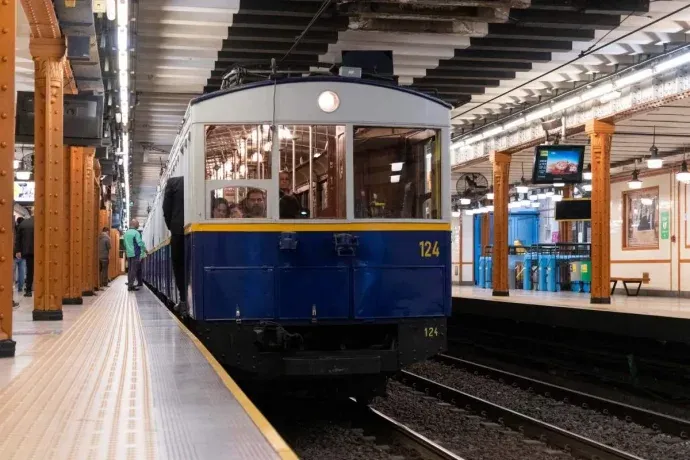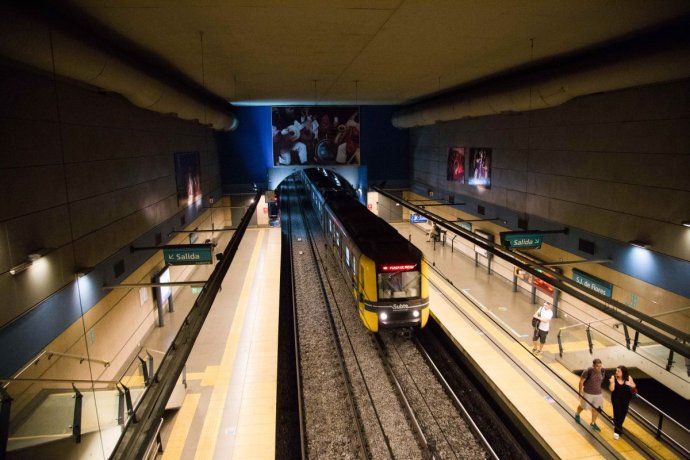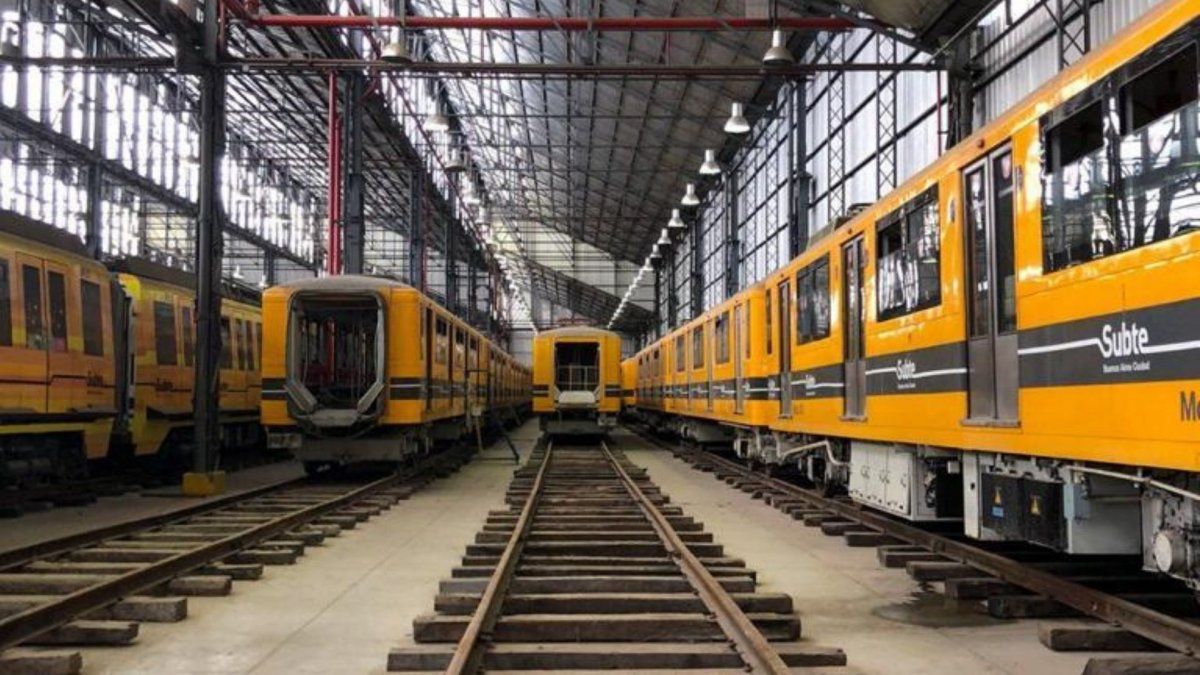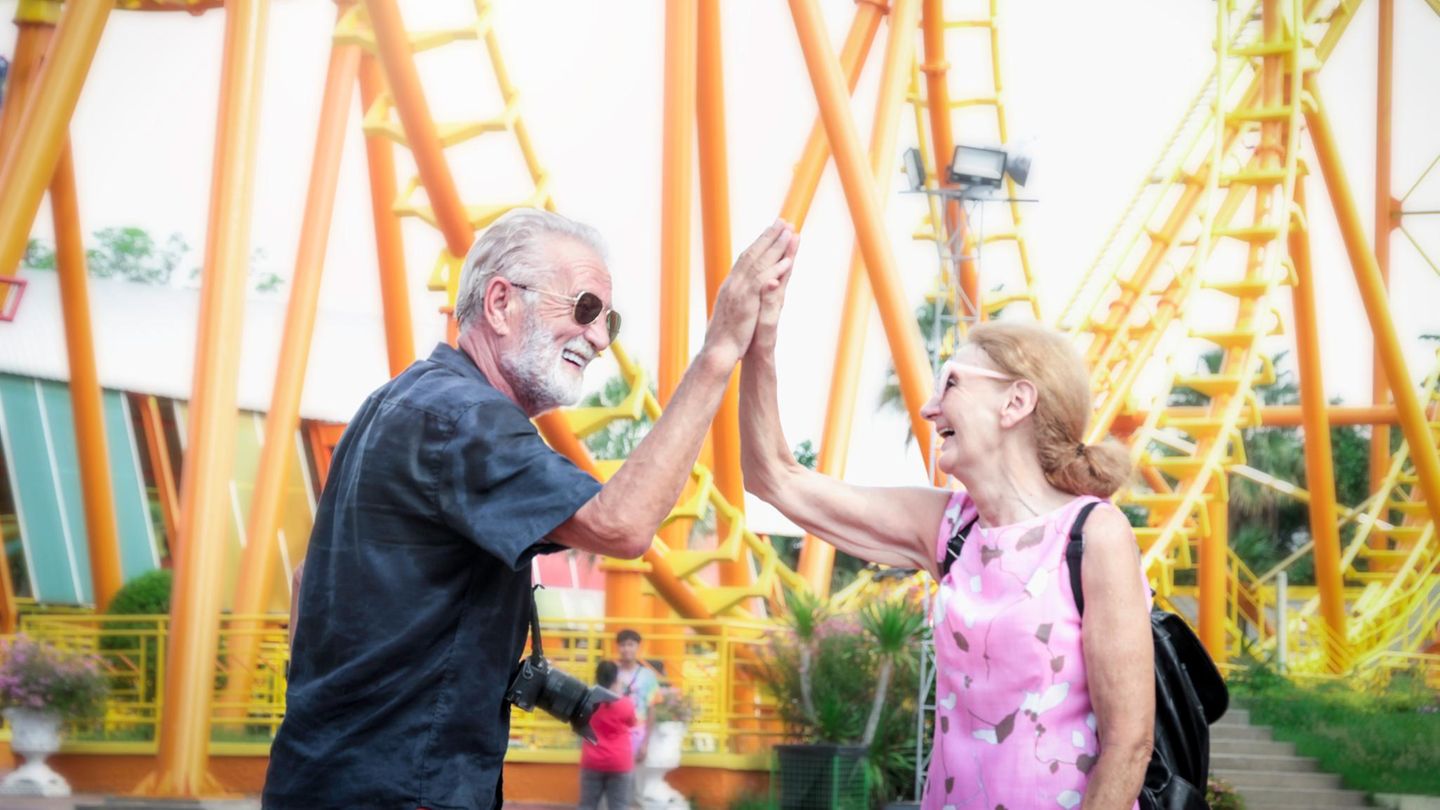Special service Line A.jpg
Subterráneos de Buenos Aires Sociedad del Estado is the Buenos Aires company that is in charge of the administration of the subway network, its development, expansion and control of the operation of the service.
Press – Sbase
“The impact of the inauguration of the subway on the city was immenseand not only in relation to the citizen movement: the following days, for example, the urban legend that subway travel made passengers dizzy and that it was not suitable for women,” recalled the former president of Sbase Juan Pablo Piccardo in the book “Buenos Aires Subway, 100 years”published on the occasion of the centenary.
Three years earlier, the Argentine capital had celebrated the first centenary of the May Revolution and was in a process of accelerated transformation that sought emulate European capitalsbased on the possibilities offered by years of economic growth.
“Those were times when everything had to be done, and one of the problems to be solved was to facilitate the population mobility in a moment of demographic growth and urban expansion“, he told Télam Pablo Piserchiamember of the Association of Friends of the Tram and driver of the famous “witches” of 1912 that were taken out of circulation in 2013 and are used for Tourist trips.
historical walk in the “witches” Subte.jpg

Postcards from the historical walk in the “witches”.
Press – Sbase
Piserchia He recalled that the immediate antecedent as a means of public transportation was the “horse-drawn trams” which little by little were being replaced by their electric version, forming a vast network.
The next step in the evolution of transportation policies and “following European thought”, but also under the influence of “foreign companies that came to offer their services here in Argentina”was the decision to build a underground train service that, in principle, united the port with the Western Railway that came to Miserere Square.
Piserchia He also recalled that from the first extension of 1914 that allowed him to reach First meetingthe first subway line came to the surface to continue along Rivadavia Avenue and “ended in Forest“under a tram modality, allowing a route “even longer than the one we have today, which reaches up to Saint Peter“.
Line A subway.jpg

Press – Sbase
“In First meetingone or two cars were uncoupled from the subway – depending on whether it was rush hour and demand – and they left as a service on the surface, as a tram, to make the journey to Olive and Rivadaviawhere he turned towards First meeting“, said.
This alternative, which could be paid at once with “a combined ticket” instead of simple, it was available until 1927in which the section that until then was carried out by the tram began to be offered by “bus line 1” given the need to transport a greater number of passengers in an artery at risk of collapse.
From that time, remains as a witness “the ramp that still exists and is in use” near the station First meeting.
LINE TO SUBTE.jpg

Ignacio Petunchi
The Buenos Aires subway was the 14th to be put into operation worldwide after those in London (1863), Athens (1869), Istanbul (1875), Chicago (1892), Glasgow (1896), Budapest (1896). ), Vienna (1898), Paris (1900), Boston (1901), Berlin (1902), New York (1904), Philadelphia (1907) and Hamburg (1912).
The famous Madrid Metro, meanwhile, only saw the light of day six years after the Buenos Aires Metro.
“All the land that was removed from the work of the first section of Line A was used to fill in areas of Barracas to the South, which were all swamps, and when it was expanded from Miserere to Primera Junta, all that land was taken to Bajo Flores “, he said.
The First World War that began that same year, 1914, imposed a forced pause in the extension of the subway and delayed until 1928 the start of work on line B, whose project had been approved in 1912.
“The conflict disrupted everything, including the delivery of some spare parts and cars that had to come from Europe but were not delivered because the war took hold,” he said.
The next lines to be inaugurated were B (1930), C (1934), D (1937), E (1944), with H being the most recent (2007) and the only one created in the new century despite that since 2001 the construction of three other lines has been approved: F (Plaza Italia-Constitución), G (Retiro-Cid Campeador), and I (Parque Chacabuco-Plaza Italia) under Law 610 of the Legislature Buenos Aires
On three occasions, excavations to expand the subway allowed the discovery of paleontological finds.
Thus, the construction of subway B in 1930 brought to light the remains of a mastodon that is today exhibited in the Museum of Natural Sciences of La Plata; In 1999, line D was in the news for exposing the shell of a glyptodont that can be seen at the Juramento station and a year later a crew was carrying out excavations under Avenida Triunvirato at 2900, in the Buenos Aires neighborhood of Chacarita, and found remains fossils of a million-year-old glyptodont, which today are kept in the Argentine Museum of Natural Sciences “Bernardino Rivadavia”, located in Parque Centenario.
The saddest page of the Buenos Aires subway, meanwhile, is undoubtedly the attack with an explosive device perpetrated by an anti-Peronist commando on April 14, 1953 at the same time that a similar one exploded in the downtown hotel, both attacks leaving the death of six people. dead Among the tragedies we must also count the derailment with four deaths on April 26, 1985 on line D.
In each era, the subway was one of the first spaces of urban infrastructure to incorporate the innovations of each era, such as the escalators that line B added since its inauguration, magnetic cards (first subtepass, then a wallet until the current Sube) or the current QR code.
Since 2020, Subterráneos de Buenos Aires has had the Centenera Heritage Laboratory, a space co-managed with the Association of Friends of the Tram and dedicated to the preservation and dissemination of Buenos Aires heritage linked to this means of transportation, such as the old carriages of line A.
“Today, 110 years after (the inauguration of the first subway service), we have a solid network, which together with the bus network, makes up one of the largest intermodal systems in the world,” concluded López Menéndez.
Source: Ambito
I am an author and journalist who has worked in the entertainment industry for over a decade. I currently work as a news editor at a major news website, and my focus is on covering the latest trends in entertainment. I also write occasional pieces for other outlets, and have authored two books about the entertainment industry.




